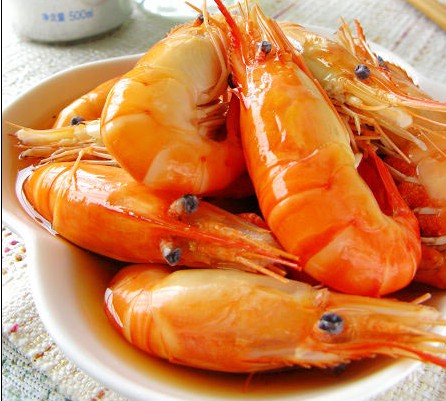How to improve the efficiency of raising chickens, it is the key to get rid of five misunderstandings.

How to improve the chicken breeding rate, laying rate and weight gain rate of broilers is the most concerned issue for chicken farmers, and it is also the key to whether the chicken industry can achieve economic benefits. At present, the economic benefits of some rural farmers are on the low side, which has something to do with the five misunderstandings existing in the concept of farming. In order to improve the efficiency, we must eliminate the wrong consciousness and take correct countermeasures.
Misunderstanding one, there is no consciousness of improved breeds.
Some farmers in rural areas choose chicks, first of all, the price is cheap, and whether the chick is a good breed is limited to the appearance of the chick. It is wrong to evaluate the chick's quality through its cry, mental state, black navel, big belly and other external characteristics. Although these are the most basic conditions, it is often the connotation of chicks that determines chicken production performance-whether the species, age, hatching time, individual size and maternal antibodies of chicks purchased are consistent, especially with the expansion of breeding scale, this connotative factor will become more and more important, and it will directly affect the growth uniformity and immune effect of chickens in the future. The production performance and some indicators of laying hens will also be affected.
Misunderstanding: double brooding, light breeding into consciousness
The high and stable yield of chicken flocks is the guarantee to obtain the maximum benefit, and the cultivation of qualified reserve chickens is an important link of high and stable yield. However, in the actual process of feeding and management, farmers often focus on the brooding stage, and in the brooding stage, they can manage chicks according to the measures provided by breeding companies in all aspects, and even for the healthy growth of chicks, use broiler feed to meet the nutritional needs of chicks to achieve rapid growth However, in the main period of determining high yield-the early stage of breeding (whether the body weight of 10-week-old chickens reaches the standard or not will determine about 80% of the laying performance of laying hens), it is often ignored by farmers because it can not bring obvious economic benefits. in order to save feeding costs and use low-quality formula feed, the body weight of 8-10 weeks old is not up to standard and the evenness of the flock is poor. Missed the main management period to determine its high yield, resulting in poor egg production performance, low egg production peak, short duration of egg production peak and other adverse effects. Due to the use of low-nutrition feed, in order to meet their own growth needs, a large number of low-nutrition diets lead to an enlarged stomach, so that the feed intake during the laying period is 5-10 grams more than that under normal feeding conditions. In terms of the economic benefits of the whole laying hens, the breeding cost has been greatly increased, resulting in great losses.
Misunderstanding: the universal consciousness of vaccine
Some farmers think that after the chicken has been vaccinated, everything will be free from all diseases and everything will be fine. Often do not pay attention to immunization procedures and feeding management, such as free-range chickens can be seen everywhere, sick and dead chickens are thrown everywhere in river ditches, roadsides, front and back houses, artificially causing the recurrence and prevalence of many infectious and parasitic diseases, causing great economic losses to the chicken industry.
Vaccinate chickens, the immunization procedure is very important. First of all, in the formulation of immunization procedures, according to the actual situation of the region and the breeding community, reference should be made to the immune procedures provided by the brooding company, the variety of vaccines, the time of producing protective power and other factors; secondly, high-quality vaccines should be selected and the injection site and dose should be well mastered; third, live vaccines should not be used for viral infectious diseases that do not occur locally. Fourth, after each vaccination, the vaccine empty bottles, vaccination bottles, vaccination utensils, nose drops, eye drops and injection places should be carefully disinfected.
Four misunderstandings despise disinfection
Disinfection is the only means to kill bacteria and viruses in chicken sheds and sports places, and it is one of the important measures to keep the environment clean and healthy. One of the important reasons for the high morbidity and mortality of farmers raising chickens is that disinfection work has not been done or not done thoroughly, poor environmental hygiene, and the existence of pathogenic microorganisms; in some breeding areas, farmers are relatively casual in their houses with each other, and there are no necessary disinfection troughs, disinfection pots and basic disinfection measures at the door of the chicken house, let alone cross-disinfection. Artificially increased the incidence of conditional pathogens-Escherichia coli and mycoplasma disease in farmers. Farmers must enhance the awareness of disinfection and disease prevention, seriously, carefully, and attach great importance to disinfection work.
Misunderstanding five: feed is more important than quality and drugs are abused.
Feed is the basis of the production performance of chickens, high-quality, comprehensive and reasonable feed can often give full play to the maximum production potential of chickens, make chickens high and stable yield, and produce higher economic benefits.
In the actual breeding process, because the feed cost accounts for about 75-80% of the breeding cost, some farmers only pay attention to the feed cost and do not pay attention to the feed quality. In fact, the use of poor quality feed, the input-output ratio is higher than good quality; in low-quality feed often contains a large number of miscellaneous meal, in which anti-nutritional factors and some pathogenic factors will greatly reduce the level of nutrition available in the feed, but also lead to body disorder, easy to be infected with the virus, thus increasing the mortality of chickens, resulting in a great impact on production.
According to the growth of chickens and the need for disease prevention in a certain period, it is appropriate to add some drugs to the feed in the short term. However, the phenomenon of drug abuse in some farmers is very serious, mixed with drugs in feed all the year round, which not only causes drug waste, but also easy to produce drug resistance, once they get sick, it is very difficult to treat. Poisoning caused by long-term drug use is also common.
Therefore, the disease of chickens should be diagnosed in time, prescribe the right medicine to the case, and absolutely not use medicine at will, blindly, or increase the dosage. It is even more forbidden to use drugs as health care agents and growth-promoting agents for a long time. If drugs must be used, attention should be paid to: the selection and compatibility of drugs should be reasonable, the dosage should be accurate, and the time of drug use should be appropriate. General drugs should not be used continuously for more than a week to avoid drug resistance and adverse reactions.
- Prev

Technical specification for feeding management and artificial insemination of breeder Roosters
Technical specification for feeding management and artificial insemination of breeder Roosters
- Next

The secret of fresh water shrimp culture technology
The secret of fresh water shrimp culture technology
Related
- On the eggshell is a badge full of pride. British Poultry Egg Market and Consumer observation
- British study: 72% of Britons are willing to buy native eggs raised by insects
- Guidelines for friendly egg production revised the increase of space in chicken sheds can not be forced to change feathers and lay eggs.
- Risk of delay in customs clearance Australia suspends lobster exports to China
- Pig semen-the Vector of virus Transmission (4)
- Pig semen-the Vector of virus Transmission (3)
- Five common causes of difficult control of classical swine fever in clinic and their countermeasures
- Foot-and-mouth disease is the most effective way to prevent it!
- PED is the number one killer of piglets and has to be guarded against in autumn and winter.
- What is "yellow fat pig"? Have you ever heard the pig collector talk about "yellow fat pig"?

